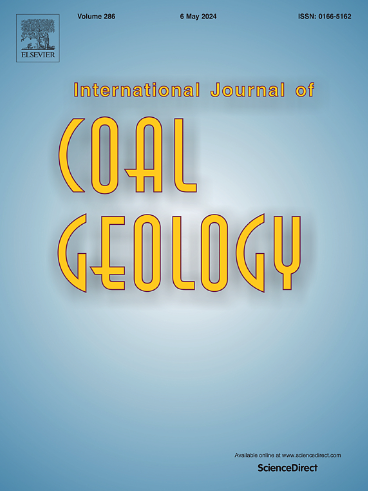Characteristics of pre- and syn-rift sequences in the central Gulf of Suez: Implications for hydrocarbon generation and paleoenvironment
IF 5.7
2区 工程技术
Q2 ENERGY & FUELS
引用次数: 0
Abstract
The October sub-basin is one of the largest oil fields in Egypt, situated within the central Gulf of Suez petroleum province. Four wells were studied to investigate the petroleum system using integrated geochemical and petrographic techniques. This gives valuable information on the source rock potentialities, which may help in new hydrocarbon discoveries in the October sub-basin. Organic-rich pre-rift (Late Cretaceous-Eocene) and syn-rift (early-middle Miocene) sequences were analyzed for TOC, Rock-Eval pyrolysis, vitrinite reflectance (Ro%), and lipid biomarkers. 1D basin models were built to assess hydrocarbon generation timing and remaining potential. This analysis provides valuable insights into source rocks characteristics, including quantity, quality, thermal maturity, and paleoenvironmental implications. Pre-rift strata show fair-very good organic richness, while syn-rift strata demonstrate poor-good organic richness. Pyrolysis shows that the NW wells predominantly contain Type III dispersed organic matter and organic petrography shows the presence of vitrinite in the form of collotelinite and collodetrinite) in both sequences. The same analysis also shows that the SE wells contain Type II-III and II kerogen while organic petrography shows the presence of dispersed liptinitic organic matter (e.g., telalginite, lamalginite, sporinite, liptodetrinite) and also low inertinite content. This indicates a greater marine organic matter input, which is also supported by biomarker data, with the latter suggesting low-oxygen conditions in the SE parts of the sub-basin. Pre-rift source rocks range from immature to the upper oil/wet gas window (Ro% of 0.50–1.35 % in the NW wells, 0.41–0.82 % in the SE wells), but mostly within the oil window. The NW wells show higher thermal maturity, particularly in well NO124–1, likely due to elevated geothermal gradients from rift-related Oligocene-Miocene igneous activity. As expected, syn-rift strata are immature or in the early oil window (Ro % 0.37–0.61 % in the NW, 0.36–0.61 % in the SE). Thermal maturity modeling indicates that pre-rift strata are effective source rocks entered the early oil window ∼20–15 Ma, earlier onset in the NW wells. Present-day pre-rift transformation ratios are higher in the NW (60–88 %) than in the SE (17–35 %) wells, suggesting greater remaining hydrocarbon generation potential in the SE region.
苏伊士湾中部前裂谷与同裂谷序列特征及其生烃和古环境意义
10月子盆地是埃及最大的油田之一,位于苏伊士石油省的中部海湾。利用地球化学和岩石学综合技术对4口井进行了含油气系统研究。这为烃源岩潜力提供了有价值的信息,有助于在10月次盆地发现新的油气。分析了富有机质前裂谷(晚白垩世-始新世)和同裂谷(早-中中新世)序列的TOC、Rock-Eval热解、镜质体反射率(Ro%)和脂质生物标志物。建立一维盆地模型,评估生烃时间和剩余潜力。这一分析对烃源岩的数量、质量、热成熟度和古环境意义等特征提供了有价值的见解。裂谷前地层有机质丰度表现为一般—很好,同裂谷地层有机质丰度表现为差—好。热解特征表明NW井主要含ⅲ型分散有机质,有机岩石学特征表明两个层序均存在镜质组,主要表现为胶泥岩和胶泥岩。同样的分析还表明,东南井含有II- iii型和II型干酪根,有机岩石学显示出分散的脂质有机质(如透藻质、斑藻质、孢子质、脂质泥质),且惰质质含量较低。这表明了更大的海相有机质输入,这也得到了生物标志物数据的支持,后者表明亚盆地东南部的低氧条件。裂谷前烃源岩范围从未成熟到上油/湿气窗(NW井Ro%为0.50 ~ 1.35%,SE井Ro%为0.41 ~ 0.82%),但主要在油窗内。NW井表现出较高的热成熟度,特别是NO124-1井,这可能是由于与裂谷有关的渐新世-中新世火成岩活动提高了地热梯度。与预期一致,同裂谷地层发育不成熟或处于早期油窗(Ro % 0.37 ~ 0.61%, NW为0.37 ~ 0.61%,SE为0.36 ~ 0.61%)。热成熟度模拟表明,裂谷前地层为有效烃源岩,进入早油窗~ 20 ~ 15 Ma,在NW井起生较早。现今NW裂缝前转化率(60 - 88%)高于SE裂缝前转化率(17 - 35%),表明SE地区的剩余生烃潜力更大。
本文章由计算机程序翻译,如有差异,请以英文原文为准。
求助全文
约1分钟内获得全文
求助全文
来源期刊

International Journal of Coal Geology
工程技术-地球科学综合
CiteScore
11.00
自引率
14.30%
发文量
145
审稿时长
38 days
期刊介绍:
The International Journal of Coal Geology deals with fundamental and applied aspects of the geology and petrology of coal, oil/gas source rocks and shale gas resources. The journal aims to advance the exploration, exploitation and utilization of these resources, and to stimulate environmental awareness as well as advancement of engineering for effective resource management.
 求助内容:
求助内容: 应助结果提醒方式:
应助结果提醒方式:


